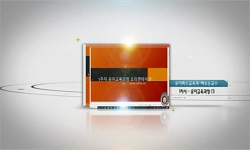본 연구는 만 5세 남녀 유아 90명을 대상으로 뇌발달 훈련에 따른 뇌기능과 다중지능 및 사고력에 대한 상호관련성을 알아보고자 하였다. 집단 선정은 뇌교육 훈련자집단 30명과 뉴로피드백 ...
http://chineseinput.net/에서 pinyin(병음)방식으로 중국어를 변환할 수 있습니다.
변환된 중국어를 복사하여 사용하시면 됩니다.
- 中文 을 입력하시려면 zhongwen을 입력하시고 space를누르시면됩니다.
- 北京 을 입력하시려면 beijing을 입력하시고 space를 누르시면 됩니다.
유아 뇌발달 훈련에 따른 뇌기능, 사고력 및 다중지능간의 관련성 연구 = A Study on the Relations between Brain Function, Thinking Power and Multiple Intelligence by Brain Development Training in Children
한글로보기https://www.riss.kr/link?id=A99643776
- 저자
- 발행기관
- 학술지명
- 권호사항
-
발행연도
2011
-
작성언어
Korean
-
주제어
유아 ; 뇌교육 ; 뉴로피드백 ; 다중지능 ; 사고력 ; Children ; Brain Education ; Neuro-feedback ; Multiple lntelligence ; thinking power
-
KDC
511
-
자료형태
학술저널
- 발행기관 URL
-
수록면
1-32(32쪽)
- 제공처
- 소장기관
-
0
상세조회 -
0
다운로드
부가정보
국문 초록 (Abstract)
본 연구는 만 5세 남녀 유아 90명을 대상으로 뇌발달 훈련에 따른 뇌기능과 다중지능 및 사고력에 대한 상호관련성을 알아보고자 하였다. 집단 선정은 뇌교육 훈련자집단 30명과 뉴로피드백 훈련자집단 30명 그리고 통제집단 30명으로 구성되었다. 각 집단별 실험처치는 매주 2회, 1회당 20분식 12주간 훈련을 실시하여 훈련 전과 후의 변인간의 상호 관련성의 변화를 비교분석하였다. 변인간 관계성을 측정하기 위하여 뇌기능 검사는 뉴로피드백 뇌파측정시스템을 사용하였고, 사고력은 색채누리행렬검사(K-Raven CPM)를 하였으며, 다중지능은 교사관찰식 설문지를 사용하였다. 상관분석 결과, 다중지능과 사고력은 사전, 사후검사에서 유의한 양의 상관관계를 보였다. 다중지능과 뇌기능은 탐색적 요인분석으로 묶인 뇌기능 하위요인 BQ1(기초율동지수, 정서지수), BQ2(활성지수, 주의지수 우뇌, 자기조절지수), BQ3(주의지수 좌뇌, 항스트레스지수, 좌우뇌균형지수)중 사전검사에서 BQ2와 BQ3는 유의한 음의 상관관계를 보였으나, 사후검사에서는 상관관계가 없는 것으로 나타났다. 이에 대한 구체적인 상관관계를 알아보기 위해 사전, 사후 측정기간의 성숙효과를 배제한 집단별 편상관분석 결과, 뉴로피드백 훈련은 다중지능, 사고력, BQ1, BQ2, BQ3의 편상관관계 측면에서 통제집단과 큰 차이가 없으며, 뇌교육 훈련은 MQ(다중지능지수)와 TQ(사고력지수)의 상관관계를 더욱 강하게 하고 BQ1과 BQ3의 관계를 강화시키는 효과가 있는 것으로 나타났다. 이러한 결과는 유아기의 풍부한 뇌가소성은 뇌교육 및 뉴로피드백 프로그램의 훈련 특성에 따라 두뇌발달에 영향을 미칠 수 있음을 시사한다.
다국어 초록 (Multilingual Abstract)
This study was designed to examine correlations between brain function, multiple intelligence and thinking power by brain development training (brain education and neuro-feedback) with 90 five-year old children. Groups selected consisted of 30 brain e...
This study was designed to examine correlations between brain function, multiple intelligence and thinking power by brain development training (brain education and neuro-feedback) with 90 five-year old children. Groups selected consisted of 30 brain education group, 30 neuro-feedback group and 30 control group. Experiment by each group was conducted for 20 min per session, twice a week, for 12 weeks and correlations among variables before and after training were compared and analyzed. Brain function test to measure relevance among variables was measured by neuro-feedback brain wave measurement system, thinking power test was measured by coloured progressive matrices (K-Raven CPM), and multiple intelligence test by teacher-observational questionnaire. As a result of analyzing correlations among brain function, multiple intelligence and thinking power, multiple intelligence and thinking power showed significant positive correlations in pretest and posttest. Multiple intelligence and brain function showed significant negative correlations with BQ2 and BQ3 in sub-factors of brain function such as BQ1 (Basic Rhythm Quotient, EQ), BQ2 (Active Quotient, ATQ right brain, Self-Regulation Quotient), BQ3 (ATQ left brain, Anti-Stress Quotient, Left and Riht Brain Balance Quotient) in pretest, but there was no correlation among them in posttest. As a result of partial correlation analysis by groups excluding maturity effect of pre- and post-measurement period to examine concrete correlations among these variables, neuro-feedback training had no great difference from control group in the side of multiple intelligence, thinking power, BQ1, BQ2, and BQ3, brain education training strengthened correlations with MQ (Multiple Intelligence Quotient) and TQ(Thinking Quotient) more and relations between BQ1 and BQ3. These results suggested that rich brain plasticity in childhood can influence the brain development depending on the training characteristics of brain education and neuro-feedback program.
동일학술지(권/호) 다른 논문
-
공감, 자아존중감, 개인가치관이 친사회행동에 미치는 영향: 청소년을 중심으로
- 국제뇌교육종합대학원대학교 뇌교육연구소
- 이화영 ( Hwa Young Lee )
- 2011
-
- 국제뇌교육종합대학원대학교 뇌교육연구소
- 오미경 ( Mi Kyoung Oh )
- 2011
-
선행연구 고찰을 통한 자아존중감의 의미와 필요성: 아동기를 중심으로
- 국제뇌교육종합대학원대학교 뇌교육연구소
- 김주남 ( Ju Nam Kim )
- 2011




 RISS
RISS KISS
KISS







